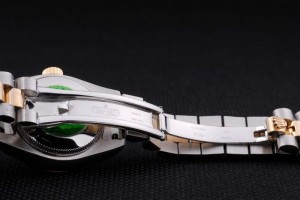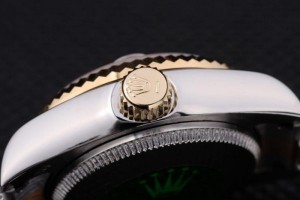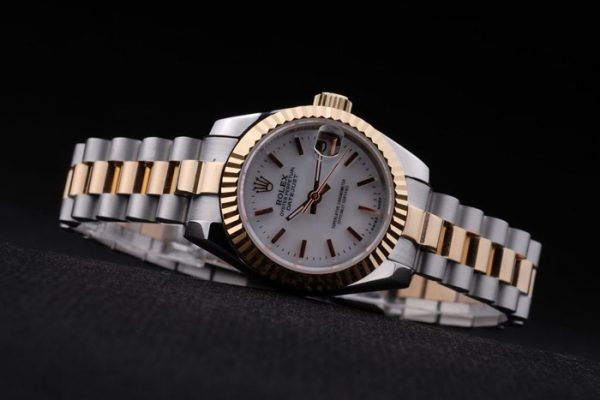A 500-Year History Of How To Set The Watch
It hardly needs to be said that watches need to be set to be of any use, and to be of any use, they must be set to a trustworthy time standard. It is something we hardly think about today – someone is dealing with it; the Internet is dealing with it, the atomic clock is coping with it, or the U.S. Naval Observatory is dealing with it. However, these resources were not available for most of watchmaking history. So if you want to set your replica watch precisely, you must use another time standard. One of my earliest horological memories is dialing a phone to get the time – when I was six or seven years old, I didn’t own a watch yet. Still, when calling for the time, I heard a gentle voice say, “On the beep, the time will be ……” followed by the announcement of the time, followed by a short beep, and it was a fascinating feeling.
In the 16th or 17th century, if you were lucky enough to own a watch – portable timepieces were for the wealthy, and even though the watch’s case was made of gold and precious stones, the movement was often more valuable than the case – setting up a look wasn’t as obsessive as it is today. A sundial would suffice if the weather were good, or, after the development of the first pendulum clocks, a clock would also suffice. As far as we know, the pendulum clock was invented by the Dutch mathematician and physicist Christiaan Huygens in 1656 and patented the following year; his design was built by the clockmaker Salomon Coster. After subsequent improvements to the design – including the deadbeat escapement invented by Englishman Richard Towneley in 1657, which was used primarily in the two precision regulators Tompion made for Greenwich Observatory in 1676 – the pendulum clock would become the most accurate timekeeping device until practical quartz clocks began to be produced in the mid-20th century.
For replica watch enthusiasts, it is interesting to contemplate the fact that, from a technical point of view, by the end of the 17th century, pendulum clocks had solved the most fundamental problems in accurate timekeeping (there were constant improvements later, including in the 20th century, but all the basics have long been there). Clocks spent the next two centuries or so essentially trying to catch up.
In general, the procedure seems to be lifting the time sphere about 5 minutes before the hour to alert moored ships of the impending time signal; time is recorded when the sphere starts to descend, not when it reaches the bottom. There are dozens of time spheres in operation worldwide, including (to pick just one) the Deere Time Sphere in Deere, England (Deere was an essential anchorage for fighting ships during the Napoleonic Wars). The Deal time sphere is triggered remotely by telegraphic signals from the Royal Observatory. In some places, the time is signaled by firing guns – these signals go off at different times depending on the location, although noon has been a long-time favorite. In Cape Town, South Africa, guns have been fired from the Battery on Signal Hill every day at noon since 1806, and they still are. Vancouver, British Columbia, also has a famous 9-point gun. This particular cannon is a muzzleloader, a 12-pounder for naval history buffs, which was cast in 1816 and bore the symbol of George III and the 1st Earl of Mulgrave, who was the Director of Ordnance.
For many people, the time displayed on their cell phones is accurate enough, and for a good reason. For the Internet to work, it is necessary for the system clocks in mobile devices and computers to be precisely synchronized throughout the network. Network time protocols are designed to synchronize participating devices within a few milliseconds of UTC, a time standard that in turn is regulated by International Atomic Time, the average of the times kept by more than 400 atomic clocks in laboratories in more than 50 countries around the world. 

Philosophically and psychologically speaking, the act of adjusting your watch is an interesting one. You try to make your watch as accurate as possible, but in setting it to a time signal or other time standard, you also acknowledge the limitations of the watch itself. However, fake watches continue to become more and more accurate, which can come as a surprise if you’re worried that the art of watchmaking is stagnating. Some companies – Omega, Rolex, Grand Seiko, Citizen, and others – continue to invest a great deal of time, energy, and effort into making more accurate watches; in fact, Citizen announced earlier this year that this lives the most accurate and precise copy watch ever made in over 500 years of watchmaking history, so clearly time and progress are moving forward, at least as far as watches are concerned.
As watchmaking evolves, obtaining the precise standards of an atomic clock is no longer a necessity but a way to enjoy and observe how precisely one’s watch or watches measure the passage of time – and how close we can come to the centuries-old dream of setting it and forgetting it.
